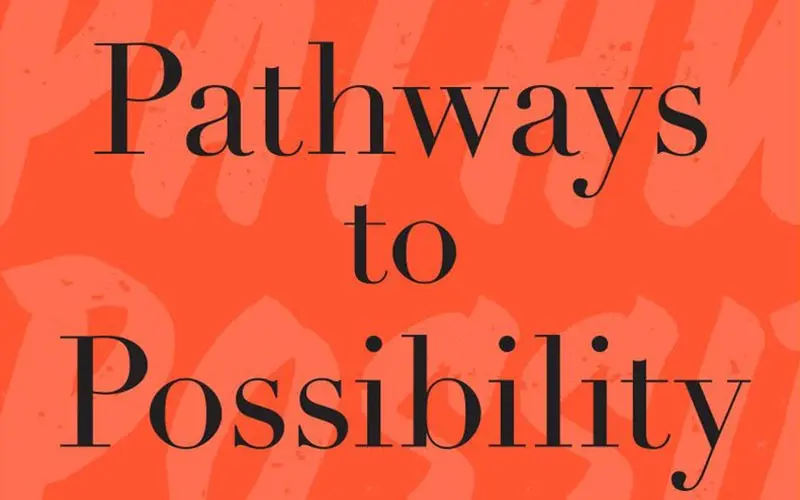If all of the kings had their queens on the throne, we would pop champagne and raise a toast. To all of the queens who are fighting alone, baby, you’re not dancin’ on your own. Can’t live without me, you wanna’ but you can’t, no, no, no. Think it’s funny, but honey, can’t run this show on your own.
Lyrics from Kings & Queens by Ava Max, released on March 12, 2020 (a day after the World Health Organization declared the Covid pandemic)
For what will we make sure March 8, 2021 is remembered?
One year into the pandemic, many countries report increasing wealth inequality: the rich got richer, the middle class shrank, and the poor are much worse off.
Women in Covid have seen a similar divergence. Next to the rise of women leaders came another archetype — that of women losing jobs, or having to drop out of work or pare back to help families manage. Women in power have become more visible while those not in leadership positions disappeared or faded from the professional stage — or are at risk.
Traits commonly attributed to women were no longer weaknesses but core traits of pandemic leaders. Simultaneously, the pandemic exposed anew the systemic barriers to workforce participation and wealth creation that have held women back.
What can we learn, personally and as society, from this apparent dichotomy of outcomes?
Can we make 2021 the year in which leaders do not look nor behave in any particular way? One in which women are considered essential to every level and every workplace? One in which every one of us chooses to challenge the fears and stereotypes we harbor about ourselves and others because it empowers us to overcome them? One in which we move beyond the archetypes in which women are often trapped (or trap themselves)? Corporate powerhouse or stay-at-home mom? Nice or competent? Well-liked by coworkers or fervent advocate for new ideas and risk losing support in an environment in which reputation and connections are everything?
Unfortunately, in 2021, we risk adding another cliché: queen bees recognized for leadership skills or worker bees who essential work helped us survive and those who lost access to livelihoods and careers.
Worker Bees: Dispensable Workers?
In September alone, around 865,000 American women dropped out of the labor force compared to 200,000 men. One in three mothers have considered doing so because of COVID-19. Many face a housing crisis. In the words of a mother of two:
“I feel like I am failing at everything. I am failing at work. I am failing at my duties as a mom. I am failing in every single way, because I think what we’re being asked to do is nearly impossible. How can you continue to perform at the same level as in the office when you had no distractions, plus being asked to basically become a teacher for kids and everything else with online learning?”
The collapse of the childcare sector and the drastic reduction of school supervision hours has forced women to do significantly more domestic chores and family care. Even before the pandemic, women did 75% of the 16 billion daily hours of unpaid work worldwide. This care burden falling on women is estimated to cost the U.S. economy some $64.5 billion per year in lost wages and economic activity.
More alarming is the fact that many women might not be coming back to work at the rate at which they left. The ripple effect will be dire for women’s economic progress and independence, their well-being and mental health, and society’s progress. In late November 2020, UN Women Deputy Executive Director Anita Bhatia warned that COVID-19 is sending women in the workforce and social progress backward all over the world. “Everything we worked for, that has taken 25 years, could be lost in a year.” Thankfully employing for working women parents in the U.S. has recovered strongly.
Queen Bees: Better Leaders?
This year also brought many opportunities for women to shine.
A 2019 leadership assessment of 60,000 leaders found that women outscored men in most categories that differentiate an excellent leader from an average one. Initiative, resilience, self — and others — development, integrity, and honesty are among the skills that set women apart.
A similar analysis during the first phase of the pandemic shows not only that women rated as more effective leaders versus men, but that the leadership gap between genders further increased — possibly indicating that women tend to perform better in a crisis.
Women leaders globally have been praised for better managing the COVID crisis. An analysis of 194 countries revealed that infection and fatality rates were lower in countries with female leaders, and another found that female-led U.S. states also experienced lower fatality rates. Strict lockdowns and mask-wearing rules played a role. Potentially, women leaders are more risk averse when it comes to the prospective loss of human lives. They are inherently flexible, experts reported, more capable of operating in the unknown, and able to handle unpredictable situations. The Covid story is just being written, however, and some of these early successes may seem pyrrhic.
At the organizational level, the crisis called for traits that could historically be seen as weaknesses, such as being empathetic, vulnerable, and open to admit that one does not know or is wrong. These are now praised and encouraged in a professional world filled with deeply distraught employees. Moreover, when asked about what they valued and needed the most from their leaders now, workers mentioned the ability to pivot and learn new skills, employee development, sensitivity, and understanding of the stress, anxiety, and frustration among people — all traits more often being displayed by women.
Finally, in the U.S., women are leading the diversity, equity, and inclusion charge at the community level and in the public and private sectors.
Not in the resumé, but certainly part of the job…
Covid has also seen a lot of female leaders in communities or smaller spheres of influence. Women reinvent themselves, fostering cooperation in the communities in which they live to support others and minimize the pain and suffering due to Covid. To create a positive generational impact and increasing social capital, they are masters in the trade. Neither queen bees, anointed and visible, nor worker bees with a six-week lifespan. They are both.
We heard about a mom with two kids and a full-time job who took baking as a Covid hobby and now bakes hundreds of loaves of bread a month with all proceeds going to feed families facing food instability in her town. Or a non-profit leader who pivoted from traditional services and mission to embrace supporting students with no adult supervision at home. She directs pick-up/drop-off traffic, helps Kindergarten kids login in to their online classes, heats up school lunches, and manages children refusing to wear masks. Was that her job description? No. But she rose to the challenge because of a greater need. That is the kind of female leadership we have seen during Covid. This kind of leadership is critical for our society to survive and thrive — during and beyond crises.
We must embrace the opportunities brought in the last year to bridge the persistent gender gap and acknowledge how our beliefs contributed to the current situation. Gender equality will never arrive as an act of God or birthright; it will be achieved one woman and her allies at a time advocating for her rightful place in the workforce and a more balanced load at home.
What can we all do and choose to challenge, starting today, to ensure that we rebuild better organizations?
Change the stories
Female-based archetypes are often reinforced among women themselves. From dispensable workers, poor drivers, or being seen as too emotional, we must, first of all, acknowledge the stereotypes that we have internalized about ourselves and our own gender in addition to challenging them in society. The journey for meaningful change always starts with oneself.
If women leader harbor these stereotypes, the companies and countries they lead may outperform on some metrics but still fail on others. Glass ceiling and gender discrepancy at work are also related to persistent unconscious bias influencing decision-makers –who perhaps don’t even notice it. So as a decision-maker, regardless of gender, challenge your unconscious biases and patterns. Mentor other women with the same alacrity as everyone else.
Mentor yourself as your best coach would, too — stretch and encourage yourself. Women often underestimate themselves while men are generally overconfident, according to Zenger and Folkman. This finding applies not just to leadership promotion but also in terms of job-hunting and application. For example, women might be more likely to apply for a job for which they meet all requirements, while men, often more confident about their skills and ability to acquire new ones, apply regardless. So, if you think you might be qualified, you probably are.
Humanize role models
In 1863, Queen Elisabeth could hardly breathe under her corset — which was probably putting some 80 lbs. of pressure per square inch on her torso. She was the Queen of England but suffocated under society’s expectations of how she was supposed to look. The idea of a role model can be immediately intimidating. They seem designed to display outcomes like trophies, themselves results of long sacrifices. They aim to be perfect in and in control in all parts of their professional, personal, and physical lives — and in some instances worsen mental health outcomes, can lead to more substance use or eating disorders.
As women, we often feel compelled to please, be perfect and then judge ourselves and others harshly. We need to reveal our challenges and see them in others and understand what it takes, in terms of perseverance and struggle, along with sharing compelling narratives. The crisis profoundly affects mental health and well-being among all women, with 83% of women versus 36% of men reporting a considerable increase in depression. Senior level women are reporting the highest exhaustion rates.
Seize the future of work
About 25% of us will change jobs as part of the pandemic. According to the World Economic Forum, competencies primarily associated with women are ranked among top future job skills. This rise of the service industry could, as it did in the late 1960s, be a significant game-changer for female workers. Women retain a comparative advantage in sectors in which emotional, communication and interpersonal skills are critical and can’t be easily automated. Those who are better at reinventing themselves and dealing with role shifting will do better as freelancers and employees and as managers. They can be, in the word of Nicholas Taleb, anti-fragile.
Time to seize the responsibility and opportunity of inter-dependency
To survive, hives need worker bees and a queen bee fertilized by a drone. The hive cannot survive without the queen, neither can the queen survive without the worker bees, and there would be no worker bees without drones. So while the pandemic risks strengthening stereotypes of women as “queen bee” and “worker bee,” it has also made clear that we all need each other and how deeply we are connected.
In 2023 there will be 8 billion of us. It is incumbent on us to behave that way and give up the archetypes and hyper-individualism at the root of many modern ills.
By Bahia El Oddi and Carin-Isabel Knoop




